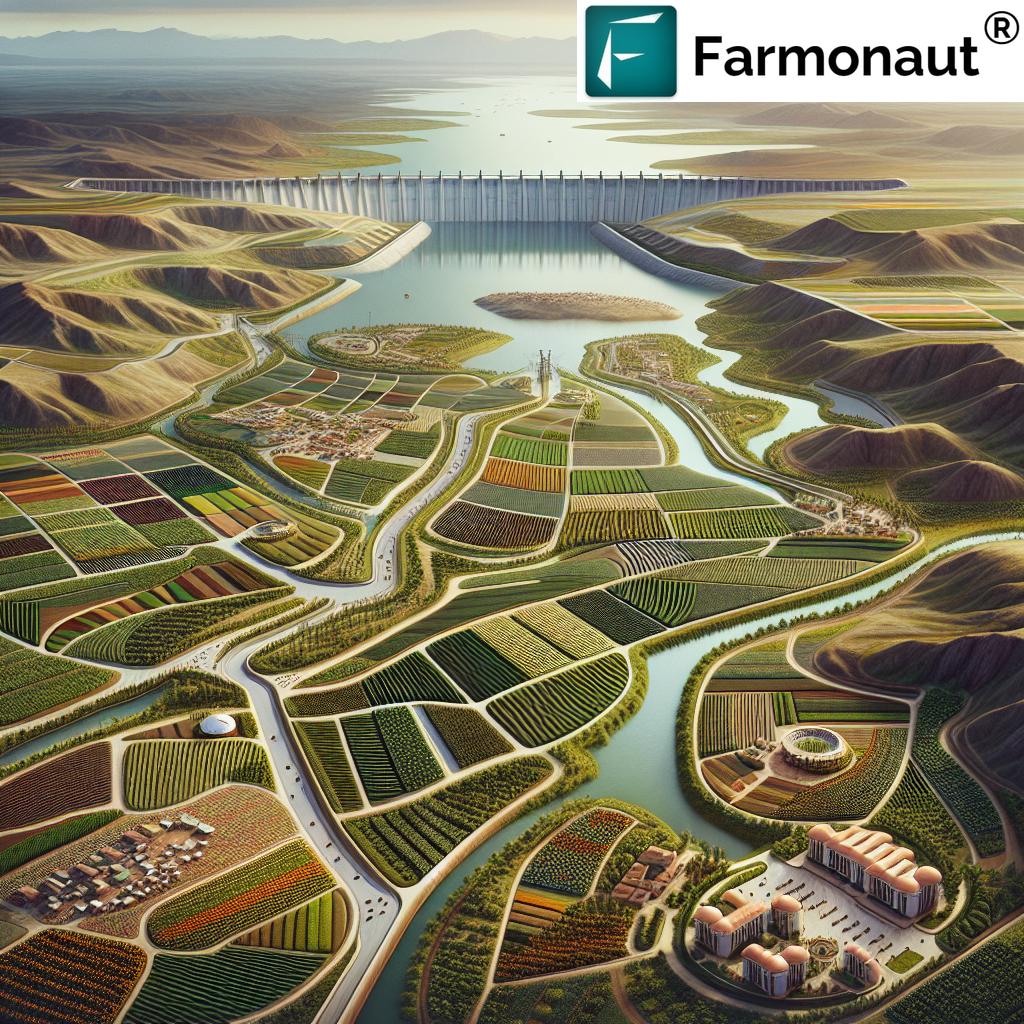Amazon Rainforest Environmental Impact 2025: Agroforestry, Coconut Oil
Amazon Rainforest Environmental Impact 2025: The Critical Overview
The Amazon rainforest, often described as the “lungs of the Earth”, plays an indispensable role in global ecology. It absorbs an immense amount of carbon dioxide, help in climate regulation, and fosters breathtaking biodiversity. By 2025, mounting pressure from economic development, agriculture, and global demand for products like coconut oil is expected to intensify the environmental dynamics within the Amazon. Understanding the amazon rainforest environmental impact 2025 is vital to shaping sustainable, forward-looking strategies.
As the Amazon stretches across Brazil, Peru, Colombia, and several other South American countries, it spans over 5.5 million square kilometers and harbors almost 10% of the world’s known species. Its role in stabilizing the planet’s climate cannot be overstated, nor can its cultural significance to indigenous communities and local populations.

Explore real-time Amazon monitoring with Farmonaut App
Key Drivers of Amazon Rainforest Environmental Impact 2025
- Deforestation: Driven by agriculture, infrastructure expansion, and logging activities.
- Commodity Crops: Expansion of monoculture farming, notably soy, beef, and emerging coconut oil production, altering land use patterns.
- Climate Change: Altering rainfall patterns, forest resilience, and species distribution.
- Socioeconomic Development: Balancing the livelihoods of local communities with conservation needs.
Approach: Sustainability & Land Management
To address these complex challenges, experts emphasize the role of agroforestry practices and the careful examination of product supply chains, notably those related to rapidly growing sectors like coconut oil. Both the environmental impact of agroforestry and the coconut oil environmental impact present critical opportunities—and risks—within the broader sustainable development strategies for 2025 and beyond.
Trivia: Coconut Oil vs. Palm Oil
Agroforestry Environmental Impact in the Amazon
The Rise of Agroforestry: A Sustainable Path Forward
Agroforestry is an integrated land use approach combining agriculture and forestry practices within the same area. This model has emerged as a promising solution for the Amazon rainforest environmental impact 2025 by balancing economic and ecological needs.
Traditionally, large areas of the Amazon were cleared for cattle ranching and monoculture farming, causing elevated levels of deforestation, soil degradation, and biodiversity loss. By 2025, the increasing adoption of agroforestry systems marks a shift toward restoring forest canopy cover, supporting ecosystem services, and enhancing rural livelihoods.
Key Agroforestry Benefits in 2025
- Reduced Deforestation: By enabling economic returns without clearing more forest, agroforestry environmental impact results in slower forest loss. Studies show that agroforestry in the Amazon could contribute to deforestation reduction rates by up to 30% versus conventional methods.
- Enhanced Carbon Sequestration: Mixed tree-crop systems sequester significantly more carbon—critical for global climate regulation.
- Soil Health and Reduced Erosion: Leaf litter and tree roots stabilize the soil, reduce erosion, and improve fertility for sustainable production.
- Biodiversity Corridors: Interspersed native trees and crops (like manioc, cocoa, and Brazil nuts) maintain or restore essential wildlife habitats.
- Diversified Income Streams: Farmers can harvest multiple products, reducing reliance on any singular cash crop.
- Empowerment of Indigenous Communities: Many agroforestry projects incorporate traditions and knowledge of local and indigenous peoples, ensuring land use aligns with cultural and ecological context.
Examples of Agroforestry Systems
- Cacao Agroforestry: Blending cacao trees with forest species and fruit crops, promoting shade cover, and supporting pollinator populations.
- Agroecological Brazil Nut Systems: Integrating Brazil nut trees, manioc, medicinal plants, and timber trees to ensure both food security and biodiversity protection.
- Coconut-Based Agroforestry: Emerging methods where coconut palms are grown with understory crops and native trees, mitigating the potential environmental issues associated with coconut oil production.
Challenges to Scaling Agroforestry
- Technical Knowledge and Training: Transferring best practices to smallholder farmers and communities can be limited by education and outreach capacity.
- Access to Financing: Upfront costs for establishing multi-species plantings or transitioning from monoculture can be prohibitive.
- Market Development: Connecting agroforestry products (like shade-grown cocoa or diversified nuts) to premium, sustainable markets faces logistical hurdles.
- Land Tenure and Legal Frameworks: Unclear or insecure land rights impede long-term investment and participation.
Despite these challenges, agroforestry environmental impact remains a leading solution to curb illegal logging, slash-and-burn practices, and unsustainable land conversion—all key drivers of the amazon rainforest environmental impact 2025.
Did you know? Platforms like Farmonaut’s Carbon Footprinting Solution enable accurate tracking of carbon sequestration in agroforestry systems, empowering organizations and farmers to quantify the environmental benefits of their land management decisions.
Coconut Oil Environmental Impact in the Amazon: 2025 Outlook
Coconut Oil: Opportunity and Environmental Caution
The global demand for coconut oil continues to surge, driven by use in food, cosmetic, and biofuel industries. While coconut is traditionally grown in coastal Asia and the Pacific, the Amazon region has recently seen exploratory efforts to expand coconut oil production, adding economic alternatives for local communities.
Potential Environmental Risks of Coconut Oil Production
-
Deforestation Risk:
Expanding coconut farming in the Amazon can trigger new land clearing if not carefully managed. Monoculture plantations often have serious consequences: reduced biodiversity, habitat fragmentation, and disturbances to regional water cycles. -
Chemical Inputs:
Conventional coconut farming may use fertilizers and pesticides, causing detrimental runoff to rivers and affecting both aquatic and terrestrial wildlife. -
Biodiversity Impact:
Converting forests to single-crop coconut can displace endemic flora and fauna, undermining the resilience of the broader Amazonian ecosystem. -
Socioeconomic Uncertainty:
Large agribusinesses establishing monoculture coconut farms can outcompete smallholder and indigenous land management, threatening cultural preservation and equity.
However, the coconut oil environmental impact can be significantly reduced by integrating agroforestry principles. Coconut palms interspersed with native trees and complementary crops create more ecologically balanced systems, enhance carbon sequestration, and better support local wildlife compared to monoculture blocks.
How Does Coconut Oil Production Compare to Palm Oil?
- Coconut oil crops require 40% less land per unit of oil produced than traditional palm oil systems.
- When managed within diversified agroforestry systems, coconut palms can reduce habitat loss and help preserve soil health.
- Emerging agroforestry models combining coconut, native woody species, and cash crops are being piloted in the Amazon for 2025 sustainability goals, offering lower deforestation rates and higher local job creation than monocultural coconut oil plantations.
The challenge for the Amazon in 2025 will be ensuring that economic gains from coconut oil do not repeat the mistakes associated with palm oil—primarily large-scale tropical deforestation.
Supporting Sustainable Coconut Oil Production
- Policy Incentives: Rewarding landholders and companies who adopt agroforestry and mixed-crop coconut production over monoculture plantations.
- Consumer Awareness: Educating buyers and brands about sourcing coconut oil from sustainably managed Amazonian projects.
- Certification and Traceability: Leverage tools, such as Farmonaut’s blockchain-based product traceability system, to ensure supply chain transparency and ethical practices.
Benefits of Sustainable Coconut Oil in the Amazon
- Less land conversion per output (aiding forest conservation efforts)
- Unlocks new avenues for diversified livelihoods in rural Amazonian communities
- Can contribute to restoration of degraded, previously cleared land if careful site selection and reforestation are emphasized
Interested in maximizing sustainability in coconut or agroforestry projects? Discover Farmonaut’s Crop Plantation & Forest Advisory Tools for real-time satellite-based decision support.
Comparative Impact Table: Agroforestry vs. Coconut Oil Production in the Amazon (2025)
| Land Use Type | Estimated Deforestation Rate (ha/year) | Carbon Sequestration Potential (tons CO₂/ha/year) | Biodiversity Impact (Species Richness Index) | Water Usage (liters/kg output) | Socioeconomic Benefits (Estimated Local Jobs Created) |
|---|---|---|---|---|---|
| Agroforestry (Cocoa, Brazil Nuts, Coconut, etc.) | ~0-0.5 | 10-15 | 8-9/10 (High Biodiversity) | 1600-1900 | 8-12/ha |
| Conventional Coconut Oil Monoculture | ~2-3 | 4-6 | 3/10 (Low Biodiversity) | 2100-2500 | 2-4/ha |
| Traditional Cattle Ranching | ~6-8 | 1-2 | 2/10 (Very Low Biodiversity) | 3500+ | 1-2/ha |
| Coconut-Based Agroforestry | ≤1 | 8-12 | 6-7/10 (Moderate Biodiversity) | 1800-2000 | 5-10/ha |
*Estimates reflect typical values for Amazonian land use in 2025. Species Richness Index: 1 (Very Low) to 10 (Very High).
Biodiversity & Sustainable Development in the Amazon (2025)
Why Biodiversity Matters for the Amazon Rainforest Environmental Impact 2025
The Amazon’s biodiversity is vital for ecological stability, future scientific discovery, and the well-being of local and indigenous communities. More than 390 billion trees and an estimated 16,000 tree species provide shelter and food for birds, mammals, amphibians, and insects found nowhere else on Earth.
Deforestation, monoculture farming (including coconut or soy), and habitat fragmentation remain key threats to these irreplaceable resources. Agroforestry environmental impact has shown remarkable promise in reversing or mitigating these trends by preserving forest cover, enhancing connectivity, and allowing sustainable yields.
Ecosystem Services Maintained by Sustainable Practices
- Pollination: Diverse plantings support pollinator insect populations essential for crop yields both within and outside the forest.
- Soil Fertility: Nutrient cycles are maintained through organic matter return from tree crops like Brazil nuts and coconut palms interplanted with food species.
- Water Regulation: Healthy forest cover manages rainfall infiltration and prevents catastrophic flooding or drought events.
- Climate Moderation: Tree canopies in agroforestry systems reduce heat flux and evaporation compared to bare monoculture plots.
- Medicinal Resources: Many agroforestry models integrate plants with medicinal or cultural value to local communities.
Satellite Technology & Environmental Monitoring
Remote Sensing and Data Innovation for the Amazon in 2025
As monitoring the massive and remote Amazon region remains a crucial challenge, satellite technology offers the scalability and accuracy required. These advancements have revolutionized how we measure environmental impact, track land use change, and design conservation strategies.
For example, multispectral and radar imaging can:
- Distinguish between agroforestry, coconut monoculture plots, and untouched rainforest in near real-time
- Monitor deforestation alerts and track illegal land clearing hotspots
- Generate vegetation indices (NDVI, NDWI) that indicate forest health, crop vigor, and drought stress
- Support farmers and land managers in identifying optimal planting or restoration sites
AI-driven analytics further empower stakeholders to predict the outcomes of different land management practices within the Amazon, respond to threats, and ensure that interventions—be it agroforestry or coconut oil expansion—are sustainable and effective.
Farmonaut’s satellite monitoring platform lets users:
- Access satellite data APIs to automate environmental impact tracking for land, agroforestry, coconut, or conservation projects.
- Integrate real-time insights into farm management apps or local government systems with the Farmonaut API Developer Docs.
- Ensure food and product traceability via blockchain for enhanced transparency and sustainability in global supply chains.
- Support environmental compliance and carbon footprint reporting to unlock climate finance and access to sustainable investment streams.
Strategies for 2025 & Beyond: Balancing Economic Growth and Ecological Preservation in the Amazon
Key Strategies to Ensure Sustainable Land Use
-
Supporting Agroforestry Adoption:
Encouraging farmer-led agroforestry through subsidies, cooperative networks, and preferential market access for products that have positive environmental impact. -
Governing Coconut Oil Expansion:
Developing robust legal frameworks to restrict coconut monoculture expansion in primary forests. Promote mixed-species coconut production systems that align with best conservation and livelihoods outcomes. -
Engaging Indigenous Knowledge:
Recognize and respect traditional land management practices, which can enrich agroforestry and conservation strategies. -
Investing in Environmental Monitoring:
Expand investment in satellite platforms and local ground verification to monitor land use, carbon sequestration, and biodiversity dynamically. -
Consumer and Corporate Responsibility:
Advocate for brands and retailers to source only from projects and lands using sustainable, traceable methods. Tools like Farmonaut’s blockchain traceability bring end-to-end transparency to global supply chains. -
Financial Inclusion with Crop Verification:
Leverage satellite-based crop and plantation forest verification to enhance access to loans and insurance, reducing economic pressure to overexploit land.
Farmonaut’s Role in Amazon Rainforest Sustainability (2025 & Beyond)
As a satellite technology company, Farmonaut empowers stakeholders across the Amazon—individual farmers, local communities, businesses, and governments—with affordable, advanced satellite and AI-driven monitoring tools. While not a regulatory body or online marketplace, our platform aids decision-making by:
- Providing real-time monitoring, environmental impact dashboards, and alerts to users managing agroforestry, coconut oil production, or reforestation projects in the Amazon.
- Enabling transparency using blockchain-based traceability for agricultural and forestry supply chains.
- Offering AI-based advisory systems that guide land management decisions to maximize yields while minimizing negative environmental impact.
- Supporting financial institutions in providing satellite-driven crop/land verification for insurance and lending—critical for smallholders adopting sustainable land use models.
-
Delivering services via
 and
and  mobile apps, enabling access to state-of-the-art environmental intelligence in the field.
mobile apps, enabling access to state-of-the-art environmental intelligence in the field.
By providing real-time crop, land, and environmental monitoring, we help users proactively manage Amazonian resources—ensuring both economic opportunity and ecological preservation are attainable in 2025 and beyond.
FAQ: Amazon Rainforest Environmental Impact 2025
A: Deforestation, driven by agriculture (especially monoculture farming and new commodity crops like coconut oil), is projected to remain the leading threat. Climate change, infrastructure expansion, and illegal logging are also major drivers.
Q2: How does agroforestry help mitigate the environmental impact in the Amazon?
A: Agroforestry combines trees and crops on the same land, which reduces pressure to clear forest for new farmland, enhances biodiversity, increases carbon sequestration, and improves soil and water health.
Q3: Does coconut oil production harm the Amazon?
A: If practiced as large-scale monoculture, coconut oil production can increase deforestation and reduce biodiversity. However, adopting agroforestry systems for coconut cultivation—blending coconut palms with native species—can minimize environmental harm while providing economic benefits.
Q4: What technology is used to monitor Amazon land use and environmental impact?
A: Advanced satellite-based monitoring, such as that offered by Farmonaut, utilizes multispectral imagery, AI analytics, and blockchain traceability to provide real-time data on deforestation, crop health, carbon sequestration, and resource use.
Q5: How do I choose sustainable coconut oil or agroforestry products from the Amazon?
A: Look for independently certified and traceable products, ideally verified by blockchain or satellite monitoring platforms that guarantee sustainable, biodiversity-friendly production methods.
Q6: Can new sustainable development strategies benefit both people and the Amazon’s ecology?
A: Yes. Integrated approaches like agroforestry and responsible coconut oil expansion can maintain livelihoods, provide employment, and preserve key ecosystem services, as long as effective governance, technology, and community engagement are ensured.
Conclusion: Shaping a Resilient, Sustainable Amazon for 2025 and Beyond
The future of the Amazon rainforest hinges on our collective commitment to sustainable land use, robust environmental monitoring, and science-driven policy. The amazon rainforest environmental impact 2025 will be shaped by how we embrace solutions like agroforestry—which reduces deforestation, preserves biodiversity, and improves rural livelihoods—and how we manage the rising coconut oil demand to avoid past mistakes associated with unsustainable monoculture expansion.
By integrating innovative technologies, empowering farmers and communities, and driving policy based on data, transparency, and local expertise, we can ensure that the Amazon, the “lungs of the Earth,” continues to play its indispensable role in global ecology and climate regulation.
Farmonaut remains dedicated to supporting all stakeholders in achieving this vital balance—providing tools, knowledge, and insights necessary to steward the Amazon’s vast resources responsibly for future generations.
Ready to take sustainable land management and environmental monitoring to the next level in Amazonia?










